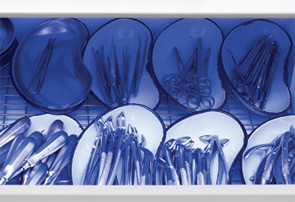In Practice: Physicians must fill out a form certifying a face-to-face encounter with a patient before discharge.
Explore This Issue
November 2011Update: CMS has continued to clarify this policy to the extent that it allows an auxiliary staff member working with the physician to complete the form and have the provider sign it.
Source:

Meaningful Use of Certified Electronic Health Records (EHR)
When: Beginning in 2011, hospitals may gradually implement EHR systems voluntarily. Those that do not comply by 2016 will incur financial penalties.
Who/What: Financial incentives are awarded to hospitals that can demonstrate “meaningful use” of certified EHR technology in their efforts to improve care and efficiency. The CMS handles meaningful use certification for Medicare patients, and state bureaus handle the proceedings for Medicaid patients.
Why: The financial incentives encourage hospitals to migrate their patients’ data to EHRs. CMS believes that EHRs will improve the health information technology infrastructure in the long term, ultimately increasing health care quality, efficiency and patient safety.
In Practice: Although it is strongly encouraged now, eventually hospitals will be required to use computerized physician order entry (CPOE) and make sure providers keep an updated inpatient problem list throughout a patient’s hospital stay.
Source:

Medical and Surgical Instrument Disinfection Guidelines
When: The latest Centers for Disease Control and Prevention (CDC) guidelines were released in 2008.
Who/What: The CDC publishes guidelines for cleaning, decontaminating and sterilizing medical and surgical instruments after use. Instructions include sterilization method/cleaning agent, strength/dilution of cleaning agent and length of exposure.
Why: Depending on the device and where and how it is used, certain decontamination procedures must be followed to reduce any risk of pathogenic infection in subsequent patients.
In Practice: Providers must determine what level of cleaning each instrument requires before repurposing. Some tools only require cleaning with soap and water, while others require a steam cleaning cycle followed by a wash with an enzymatic agent and then a dip in bleach or other sterilizing chemical.
Sources:
- Rutala WA, Weber DJ, Healthcare Infection Control Practices Advisory Committee. Guideline for disinfection and sterilization in healthcare facilities, 2008.
- Petersen BT, Chennat J, Cohen J, et al. Multi-society guideline for reprocessing flexible gastrointestinal endoscopes: 2011. Infect Control Hosp Epidemiol. 2011;32(6):527-537.

Documentation of History and Physical Examinations
When: A final rule was passed on January 26, 2007.
Leave a Reply